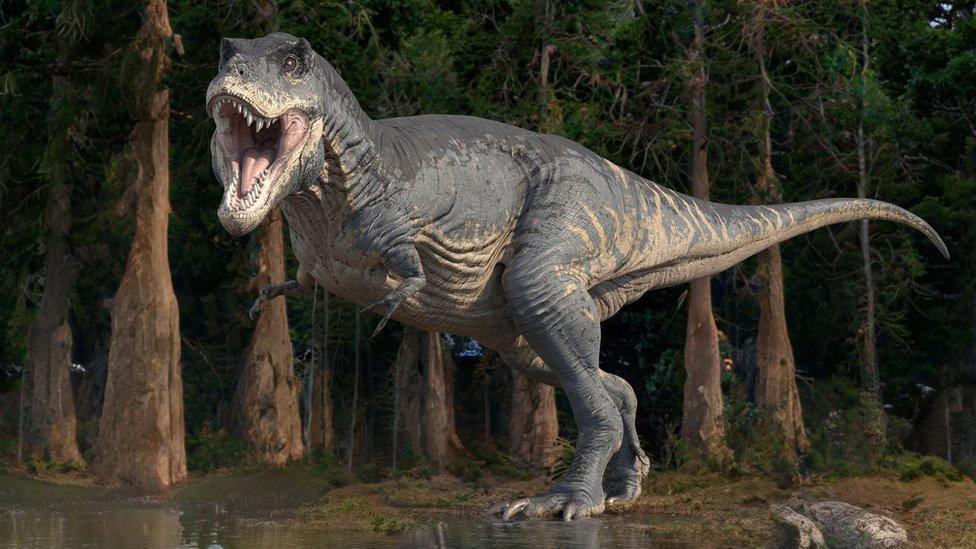Why T.rex's short arms may have stopped them getting bitten!
- Published
- comments

The T.rex was one of the biggest carnivores to have ever lived on Earth
The Tyrannosaurus rex (T.rex) is known for it's incredibly short arms, and new research suggests the dinosaur's little limbs may have had a very important purpose!
The research was carried out by palaeontologist Kevin Padian from the University of California, Berkeley.
The professor put forward the idea that Tyrannosaurids, which is the group of dinosaurs the T.rex belonged to, may have seen their limbs shrink over time to prevent them from being accidentally chomped on by a fellow dinosaur when they feasted on prey together.
The T.rex is known to have been a pretty terrifying dinosaur with it's huge frame, razor sharp banana-shaped teeth and giant head. However, if the animal's arms were longer, this could have been tricky during group feeding times according to professor Padian.
"What if several adult tyrannosaurs converged on a carcass? You have a bunch of massive skulls, with incredibly powerful jaws and teeth, ripping and chomping down flesh and bone right next to you. What if your friend there thinks you're getting a little too close? They might warn you away by severing your arm," he said.
The T.rex was one of the biggest carnivores to have ever lived on Earth.
It was around 15 feet (4.5 metres) high, approximately 40 feet (12 metre) in length and weighed about six tonnes (6,000 kilograms).
The dinosaurs are believed to have sometimes eaten together
Older species of tyrannosaurids are believed to have been smaller in size, but they had longer arms compared to the dinosaurs that followed. This suggests the reduction in the size of later dinosaurs' limbs must have happened for a reason.
Other dinosaur species would have also been affected, including the African and South American abelisaurids and carcharodontosaurids, which lived in Europe and Asia. Both types of dinosaur also had very short arms in contrast to their much bigger bodies.
The Big Question: What's the difference between all the dinosaur periods?
Professor Padian says other short arm theories that try to explain the reason for the T.rex's little limbs aren't as convincing, but admits its still very difficult to reach a clear conclusion as the dinosaurs haven't been around for 66 million years.
However, he says a link may be found if museum remains from around the world were looked at for bite marks.
"Bite wounds on the skull and other parts of the skeleton are well known in tyrannosaurs and other carnivorous dinosaurs," he said.
"If fewer bite marks were found on the reduced limbs, it could be a sign that reduction worked."
- Published23 April 2019
- Published27 September 2021
- Published26 June 2021
